The 444.100(+) WA4QHN Salem, AL repeater recently started developing serious sensitivity problems, so the owner and I pulled it out of service and brought it here to my QTH so that I could troubleshoot the repeater and duplexers and get it back in shape.
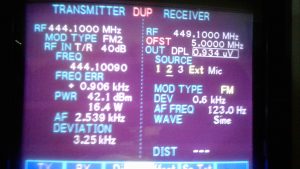
Performance of the repeater at the time it was pulled out of service was was below what it should be, with sensitivity around 1 uV, and transmit frequency off by about 900 Hz from the 444.100 MHz specified frequency.
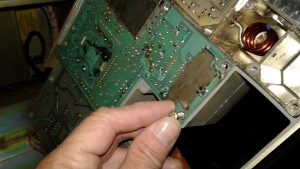
Disassembling and cleaning the subassemblies and contacts in the receiver, IF, AF, and system board sections did not resolve the receiver problems.
As soon as I hooked the repeater up here in the lab, I noted that the sensitivity of the receiver was around 1 uV and quite noisy at the lowest levels which would open the squelch. The receiver/preselector module in this Mastr II did not have the UHS (Ultra-High Sensitivity) preamp module, so it should have sensitivity around 0.3 uV. After going through the full alignment procedure on the receiver and IF section, sensitivity was still poor — around 0.5 uV. A few intermittent problems were noted, some of which persisted even after removal of the receiver modules, contact cleaning, etc. I made the decision to completely replace the receiver tray, including the front end/helical coil preselector, IF and audio section, and system board, using known good assemblies.
Following replacement of the items noted above, sensitivity improved to around 0.13 uV. The replacement receiver has the UHS preamp, which increases sensitivity considerably in comparison to a non-UHS preamp version. The reception was also very clean and quiet; however, it was then
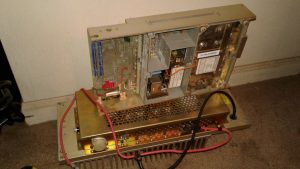
Original receiver and P.A. assemblies which were removed and replaced. These will go in the “rob for parts” stash.
noted that increasing the output of the 100 Watt P.A. (Power Amplifier) module from the 16.4 Watt level it was previously set for resulted in oscillations which were audible in the receiver starting around 22 Watts, and above about 30 Watts it would totally desense the repeater. I replaced the P.A. section with a known good 100 Watt P.A. and the oscillations and desensing problem were eliminated. The repeater tested fine with the P.A. adjusted all the way up to 85 Watts transmit power.
With everything checked out, final performance checks are now showing 0.13 uV receiver sensitivity, the output frequency is aligned to only +13.0 Hz or less error, and the output power has been set for 58 Watts. Modulation has been adjusted such that 3.5 KHz modulation with a 1 KHz test tone on the received signal (along with 0.6 KHz of 123.0 Hz PL/CTCSS tone) will produce 4.5 KHz deviation output from the repeater.
I also put the Phelps-Dodge duplexers through testing and fine tuning on the VNA. They were still quite well tuned even after having been sitting there in service for nearly two decades, and needed only very slight tweaking.
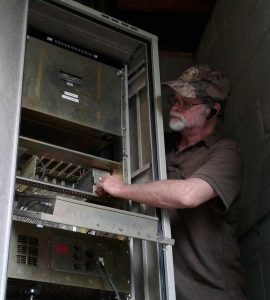
KK4ICE, firing the 444.100 WA4QHN repeater back up after repairs and reinstallation at the Salem, AL repeater site.
The repeater was put back into operation at the tower site around 7:30 a.m. today (April 19, 2018) and appears to be working much better. I can get into the repeater from my QTH using a handheld radio again — a significant improvement.
73,
KK4ICE
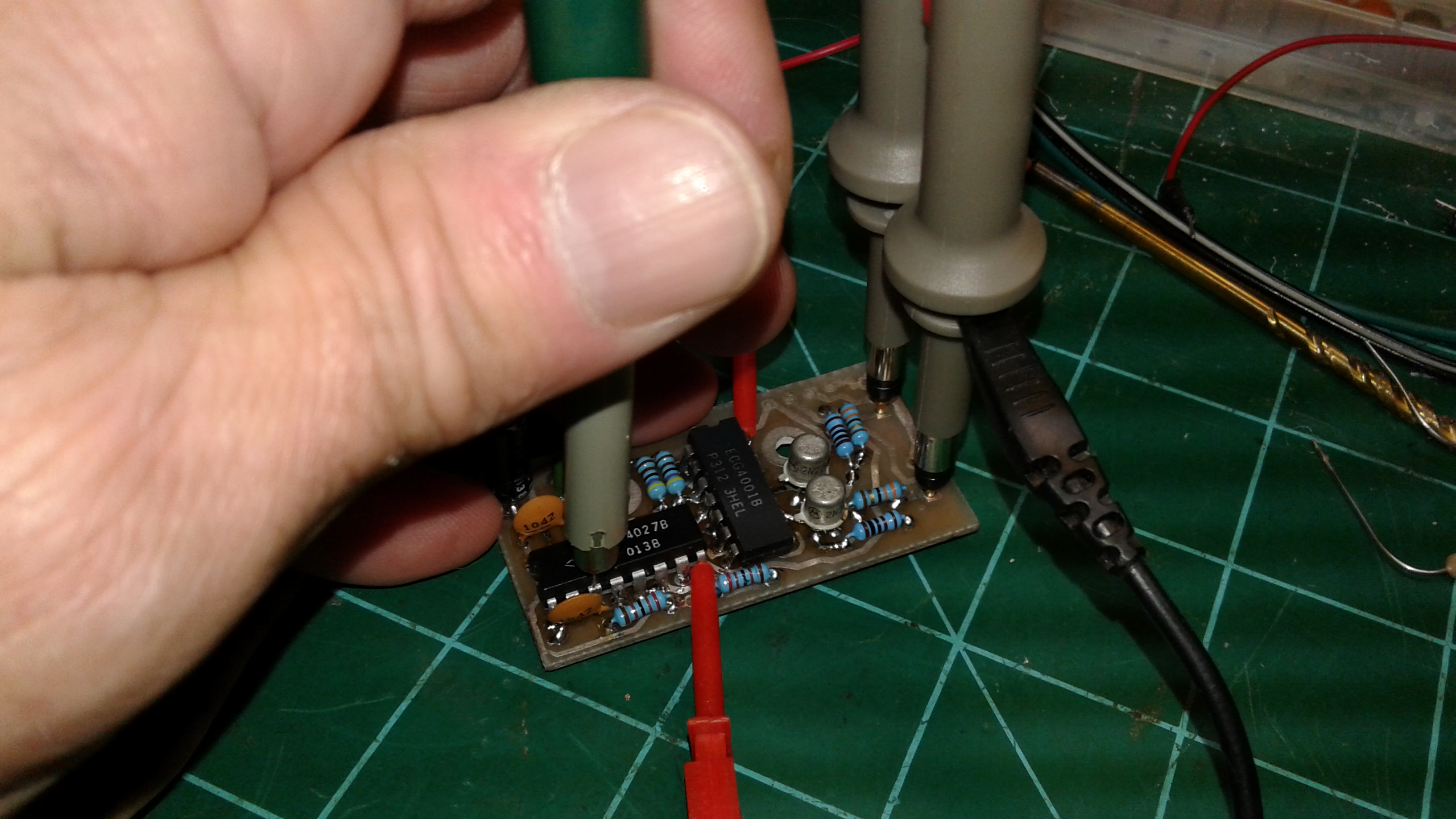
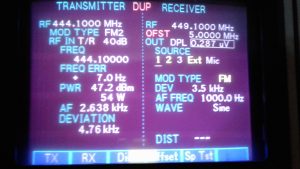
Recent Comments